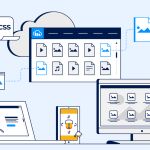
AI-Powered Sentiment Analysis: Revolutionizing User Research Insights
- Post
- August 7, 2023
- UI/UX Design, User Research, Web Design
- 0 Comments
As user-centered design gains prominence in today’s digital landscape, unlocking deep insights into user preferences and emotions has become paramount. User experience (UX) and user interface (UI) designers are constantly seeking innovative ways to understand user behavior and sentiment. This quest has led to the integration of Artificial Intelligence (AI) into the user research process, particularly through AI-powered sentiment analysis. In this comprehensive guide, we delve into the transformative impact of AI-powered sentiment analysis on user research and provide actionable tips for leveraging this technology to enhance UI/UX design.
Understanding AI-Powered Sentiment Analysis
AI-powered sentiment analysis, often referred to as opinion mining, is a natural language processing (NLP) technique that involves analyzing and categorizing textual data to determine the emotional tone, opinion, or sentiment expressed within it. By employing machine learning algorithms, AI-powered sentiment analysis tools are capable of identifying whether a piece of text expresses positive, negative, or neutral sentiment.
The Integration of Sentiment Analysis in User Research
The marriage of AI-powered sentiment analysis with user research has ushered in a new era of data-driven design decisions. Traditionally, user research relied on surveys, interviews, and focus groups to gather insights into user opinions. While these methods remain valuable, sentiment analysis adds an extra layer of depth by enabling researchers to analyze a vast amount of user-generated content, such as social media posts, online reviews, and forum discussions.
This integration offers several key benefits:
Scalability:
AI-powered sentiment analysis can process large volumes of text quickly, making it possible to analyze a wide range of user opinions efficiently.
Real-time Insights:
By continuously monitoring user sentiment, designers can gain real-time insights into how users perceive their products or services.
Identifying Pain Points:
Sentiment analysis helps identify pain points and frustrations users experience, allowing designers to address these issues promptly.
Benchmarking Competitors:
By analyzing sentiment across different products or brands, designers can benchmark themselves against competitors and uncover areas for improvement.
Methods of Conducting AI-Powered Sentiment Analysis
Supervised Learning:
Supervised learning is a common approach to sentiment analysis. In this method, a model is trained on a labeled dataset, where each text sample is tagged with its corresponding sentiment (positive, negative, or neutral). The model then learns to predict sentiments for new, unlabeled texts based on the patterns it has identified during training.
Unsupervised Learning:
Unsupervised learning involves clustering texts based on their similarity in terms of sentiment. This method is advantageous when working with large datasets where manual labeling is impractical.
Aspect-Based Sentiment Analysis:
In addition to overall sentiment, aspect-based sentiment analysis dissects the sentiment expressed toward specific aspects or features of a product or service. This granular approach provides designers with more detailed insights into user opinions.
Tips for Effective Implementation
Choosing the Right Tool:
Numerous AI-powered sentiment analysis tools are available, each with its strengths and weaknesses. Select a tool that aligns with your research goals and target audience.
Preprocessing Text:
Cleaning and preprocessing textual data is crucial to ensure accurate sentiment analysis results. Remove irrelevant characters, symbols, and emojis that may skew the analysis.
Customization:
Many sentiment analysis tools allow customization to suit industry-specific language nuances and jargon.
Combining Methods:
A hybrid approach that combines supervised and unsupervised learning can yield more accurate results, especially when dealing with complex user sentiments.
Validation:
Regularly validate the sentiment analysis results against manually labeled data to maintain accuracy.
Final Words
AI-powered sentiment analysis has transformed the landscape of user research, offering designers a powerful tool to uncover user emotions, opinions, and pain points. By integrating sentiment analysis into the UI/UX design process, designers can make informed decisions that enhance user experiences and drive product success.
Commonly Asked Questions
Q1: Can sentiment analysis replace traditional user research methods?
A: While sentiment analysis offers valuable insights, it’s not a complete replacement for traditional methods. It complements existing approaches by providing scalable and real-time sentiment insights.
Q2: How accurate is AI-powered sentiment analysis?
A: The accuracy of sentiment analysis varies based on factors such as the quality of training data and the complexity of language used. Regular validation and refinement are essential.
Q3: Can sentiment analysis differentiate between sarcasm and genuine sentiment?
A: This remains a challenge. While some advanced models can detect sarcasm, accurate differentiation is not yet foolproof due to the intricacies of language.
Q4: Is sentiment analysis suitable for all industries?
A: Yes, sentiment analysis can be applied across industries to understand user perception and sentiment. However, customization may be needed to account for industry-specific language.
Q5: How often should sentiment analysis be conducted?
A: The frequency of sentiment analysis depends on the project’s needs. For ongoing monitoring, regular intervals such as weekly or monthly are common, while specific campaigns might require more frequent analysis.




